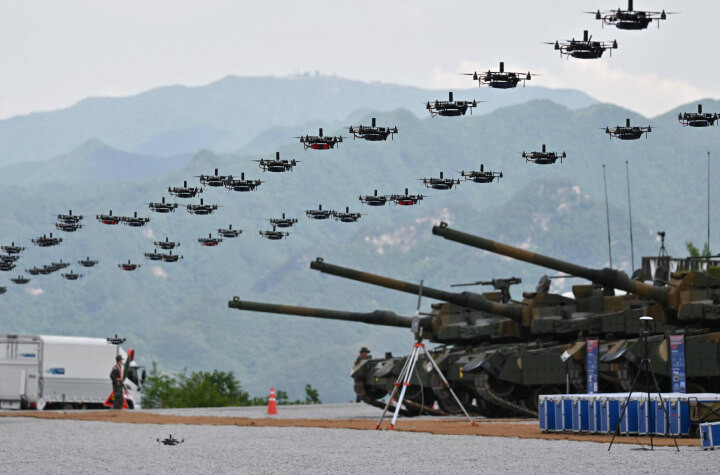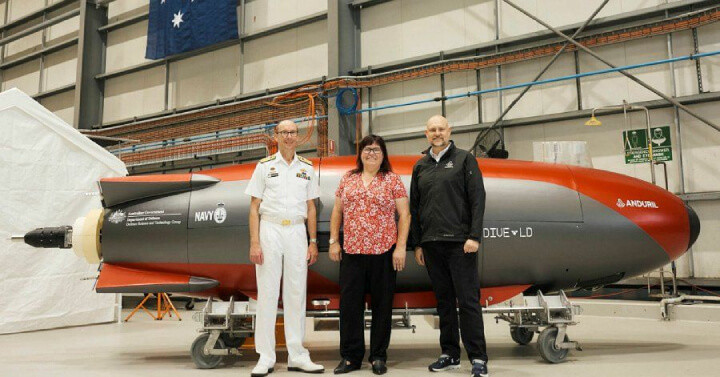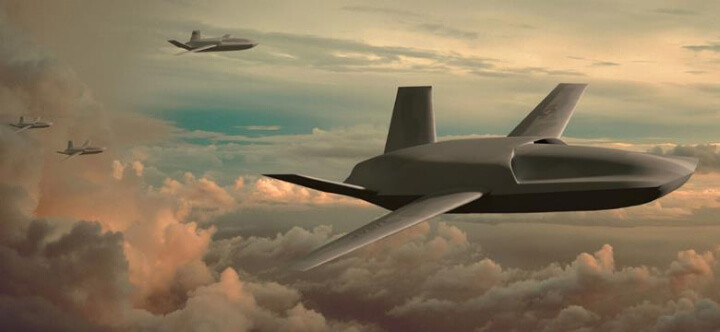Military Artificial Intelligence: Redefining the Future of Warfare
05-12-2023 | By Gary Elinoff
By now, even non-specialists have been made aware of the power of Artificial Intelligence (AI) through the wonders of Chatgpt. But AI, already a vital component of the Internet of Things (IIoT), is also beginning to play a major role in military technology and may now represent the most startling change that’s taken place since the advent of atomic weapons.
Even now, AI has been utilized in the conduct of the Ukraine war, and, in turn, the war is itself a factor in the explosive growth of Military AI. In a PBS (US Public Broadcasting) video[1], Paul Scharrf, VP of the Center for New American Security and a former Army Ranger, reports that AI is already being used to process information from sources like satellites, drones and more. The result is faster decisions and more accurate targeting than could be made by human analysts.
Scharrf maintains that many of today’s drones are capable of completely independent action – targeting and killing targets with no specific human intervention.
In a recent report hosted by 60 Minutes [2], retired Chairman of the Joint Chief of Staff General Mark Milley states that robotics and AI will rapidly change the character of war. He cautions that all nations will have access to this technology, so the US must be prepared. According to Milley, AI will allow planners to “absorb massive amounts of complex information very rapidly”, inform humans and even make decisions for action on their own.
The newly announced Replicator Program is aimed at producing thousands of autonomous weapons systems animated by AI, with the announced purpose of countering the size of China’s fast-expanding military. The general muses that in ten to fifteen years, the changes that will have taken place will be as dramatic as the jump between ships of sail to aircraft carriers, which took 200 years.

AI and Drones
If it hasn’t already arrived, the advent of drone-based AI making the “kill” decision may be fast at hand. At present, non-autonomous drones depend on global positioning satellite signals and, of course, targeting and firing authorizations from their command base.
However, a report in the New York Times[3] points out that in the current war in Ukraine, electronic blocking of these signals has been a common occurrence. This, in turn, has led to granting drones autonomy in selecting targets and pulling the trigger.

South Korea fields a drone Swarm. Image source: Bloomberg
And there’s more. The Times story quotes Deputy Defense Secretary Kathleen Hicks’ statement that the US military would “field attritable, autonomous systems at scale of multiple thousands” in the coming two years, saying that the push to compete with China’s own investment in advanced weapons necessitated that the United States “leverage platforms that are small, smart, cheap and many.”
But more about drones later!
Australia’s Ghost Shark: An Unmanned Submarine
By now, we all know about Australia’s bold plan to acquire a fleet of 13 nuclear-powered submarines at a cost of a whopping $18 billion each. The bad news, aside from the colossal cost, is that the last of these leviathans won’t arrive until the middle of the century. But the nation won’t have to wait for 30 years for advanced submarine protection, as the first three AI-animated, unmanned Ghost Sharks will be deployed in 2025, just two years from now.

The unmanned, AI-powered Ghost Shark. Image source: Baird Maritime
The nuclear subs will be as long as a football field, and will require a crew of 132 sailors. The unmanned Ghost Sharks will cost a mere $23 million Australian dollars, about a tenth of 1% of a nuke sub’s cost. As an unmanned device controlled by AI, the Ghost Sharks have no need for human life support systems, which is part of the reason for the unexpectedly low cost.
The low cost and lack of human occupants means that the Ghost Sharks are quite expendable, and they can accomplish missions that would be far too risky for multi-billion dollar units carrying precious human cargo. As reported by Reuters[4], Shane Arnott of Anduril, whose Australian subsidiary is building the Ghost Sharks for the Australian Navy, states that “There is a lot of warfare that is dull, dirty and dangerous,” Arnott goes on to say that “It is a lot better to do that with a machine.” There is much interest in these types of autonomous subs among US and Australian allies, including Britain, Japan, Singapore, South Korea and customers in Europe.
AI-Empowered Drones to Partner with Manned F35s
General Atomic Aeronautical System’s (GA-ASI) Collaborative Combat Aircraft (CCA), known as the Gambits, will serve as AI-empowered robotic wingmen for today’s F35s and for the sixth-generation warfighters to follow.
GA-ASI’s Press Release[5] makes a playful reference to the blockbuster movie “Top Gun: Maverick”, with a reproachful admiral admonishing the hotshot pilot: “These planes you’ve been testing, Captain? One day, sooner or later, they won’t need pilots at all. Pilots that need to sleep, eat, take a nap. Pilots that disobey orders. All you did was buy some time for those men out there. The future is coming, and you’re not in it. The end is inevitable, Maverick. Your kind is headed for extinction.”

The Gambit. Image source: General Atomics
Fortunately for action heroes, both real and imaginary, GA-ASI doesn’t agree. The future they outline “pairs large numbers of collaborative, mission-focused, and cost-imposing autonomous unmanned aircraft alongside the most potent human-crewed fighters of today and tomorrow.” Like the Ghost Sharks described earlier, it’s AI and machine learning that make these robotic warriors possible.
There are four Gambit versions, each serving separate airwar roles with GA-ASI stating that in all cases:
- Seamless integration is required between individual Gambits as well as with their F35 host(s). When needed, collaboration between the airborne flight and ground control must be easily established.
- Reducing human workload is a prime goal.
- The Gambit’s onboard AI allows it to decide on actions by itself, reducing the need to communicate with ground controllers via vulnerable satellite networks. At the same time, the employment of short-range mesh networks for air-to-air communication makes jamming or hacking more difficult for adversaries.
While saving cost and increasing effectiveness are important, GA-ASI stresses that “Although Gambit and future small unmanned systems, such as GA-ASI’s Sparrowhawk, are designed to return home from their sorties, they may not. And that ability to run interference between hostile action and human pilots could be the difference between a pilot being lost or returning home to her or his family.”
6th Generation Fighters
The concept of a 6th Generation fighter is still a fluid one, but all indications are that they will incorporate AI. And perhaps more importantly, they will all communicate with AI-enabled, unmanned drones, just like the aforementioned gambits paired with F35s. Another oft-repeated specification is that the 6th generation warplanes while retaining and improving on 5th generation stealth, will also recapture the speed, maneuverability and payload capacities of their 4th generation antecedents.
Both the US Air Force and Navy have their 6th-generation candidates. The Air Force is developing the Next Generation Air Dominance (NGAD) stealth fighter, which will also serve as the eventual replacement for the venerable F22. Similarly, the F/A-XX will be the Navy’s 6th generation replacement for the F/A-18. The F/A-XX will be able to launch from US aircraft carriers.
Challenges and Opportunities
AI-enabled aircraft and submarines will be able to sit far out of the “danger zone” and remotely control AI-enabled drones. Similarly, remote operators of individual drones or swarms of them will also be able to stay out of harm’s way.
Surprisingly, little is being said about security. An enemy being able to disrupt commands to a drone, or worse, to take it over, would be an unmitigated catastrophe. An autonomous drone, acting on its own based on onboard AI, would be largely immune to this hazard. Based on this and Deputy Defense Secretary Kathleen Hicks’ earlier statement, it’s likely that drones with the independent ability to choose targets and kill them will be part of the warfighter’s arsenal.
Wrapping Up
There is an ongoing debate as to how quickly AI should be adapted and what precautions need to be taken. In the commercial sector, the fast adapters have won out over those who urge caution at OpenAI, the company that gave the world ChatGPT.
Intelligent drones on air, land and sea are already a major manifestation of Military AI. The nations most capable of building and deploying these devices, including the US, Russia, China and Israel, are decidedly noncommittal about requiring the “kill” command to be initiated by a human actor. For that reason alone, we can assume that, oftentimes, both the final targeting and the decision to strike will be largely out of human hands.
Intelligence gathering, classifying and summarizing military information is a slow process when undertaken by human agents. Indeed, by the time conclusions are drawn, the opportunity to act may be gone. This process is being vastly sped up through the use of Military AI. It may not be as exciting as tales of robotic killers, but its implications and practicality might turn out to be even more of a game changer.
Key Takeaways
- Military AI can be used to gather, classify and present fleeting military situations far faster than humans can.
- Military AI will animate land, sea and air drones.
- Drones enabled by AI will mean that the lives of their users will not be exposed to enemy action.
- Unmanned drones will have no need for life support systems, slashing their per-unit cost.
- It’s a safe bet that, in some cases, at least, these drones will have the independent authority to strike and kill with no human intervention.
References:
1. How militaries are using artificial intelligence on and off the battlefield. (US Public Broadcasting): https://www.youtube.com/watch?v=Fdgh1JuKeXI
2. AI in the military: Gen. Milley on the future of warfare. (CBS Network’s 60 Minutes): https://www.youtube.com/watch?app=desktop&v=ongAkDflJuY
3. As A.I.-Controlled Killer Drones Become Reality, Nations Debate Limits: https://www.nytimes.com/2023/11/21/us/politics/ai-drones-war-law.html
4. In U.S.-China AI contest, the race is on to deploy killer robots: https://www.reuters.com/investigates/special-report/us-china-tech-drones/
5. GA-ASI's Gambit Series: The Future of Collaborative Combat Aircraft: https://www.ga-asi.com/ga-asi-gambit-series-the-future-of-collaborative-combat-aircraft

